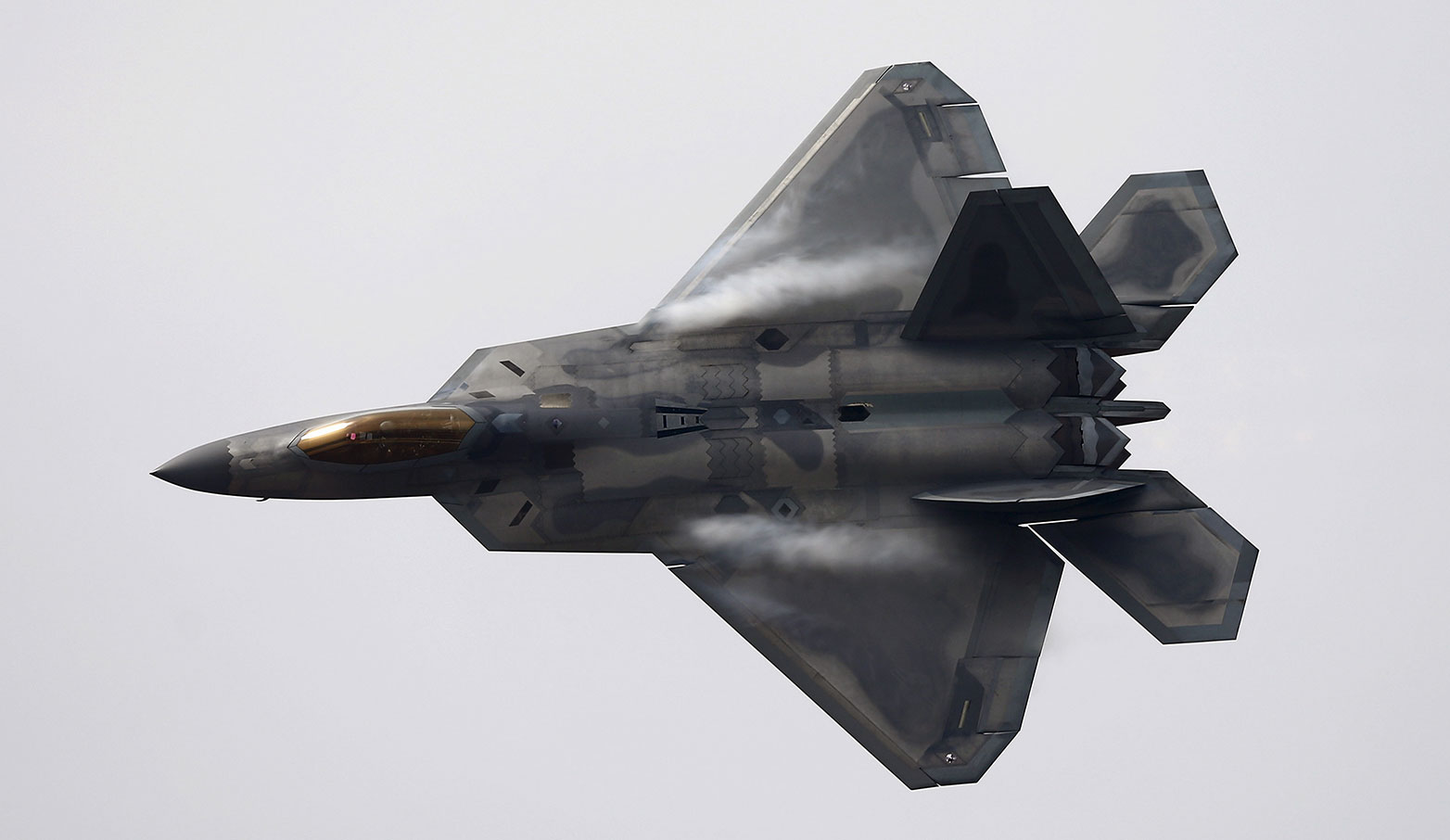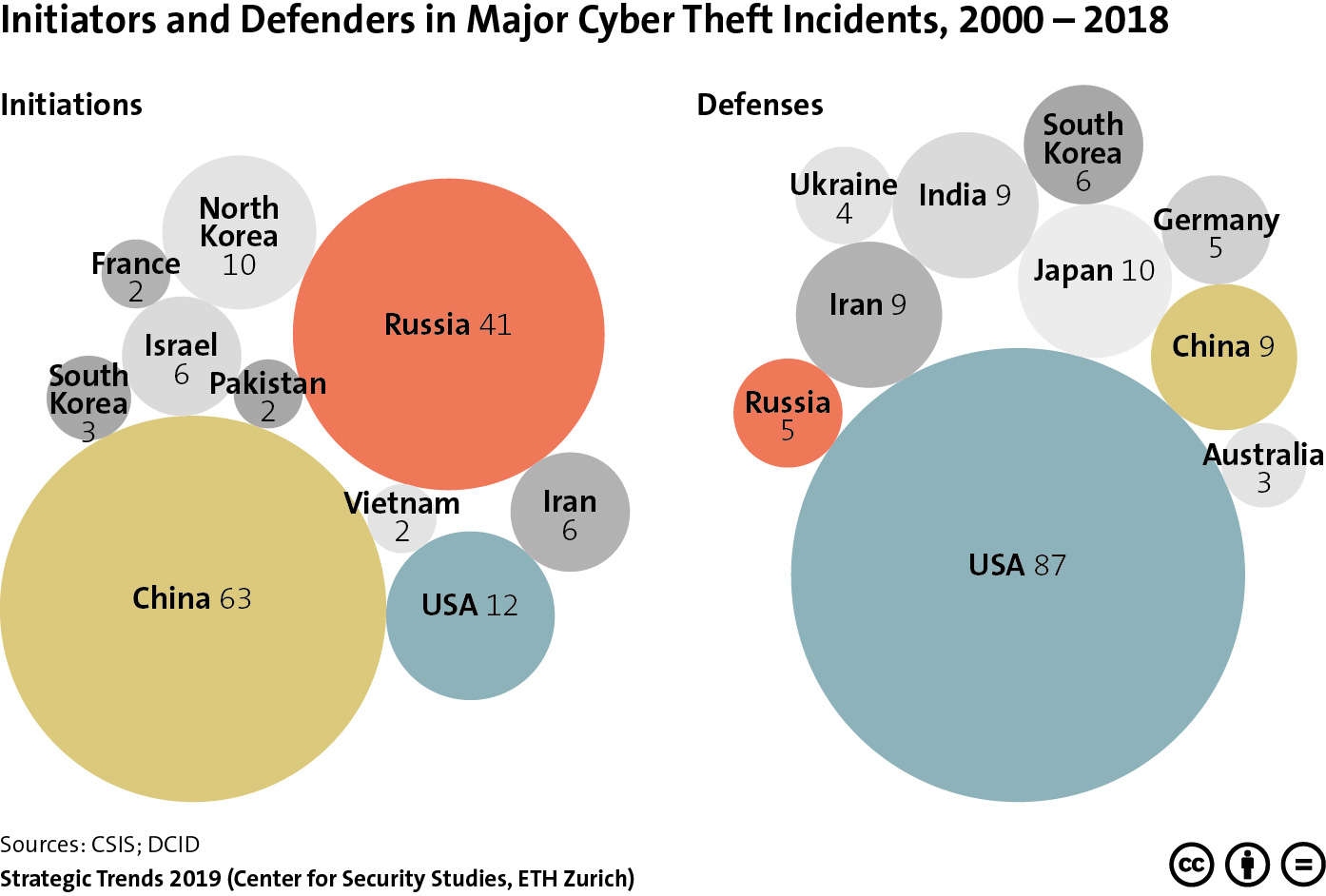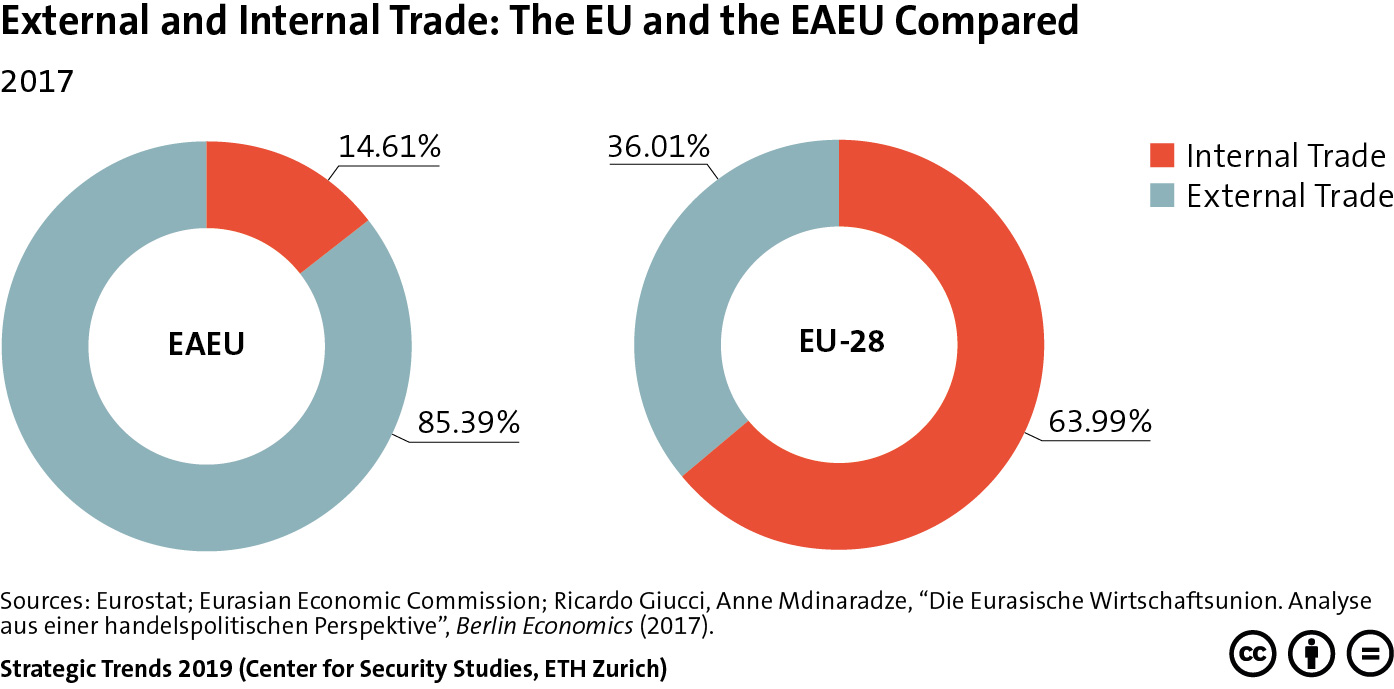Strategic Trends 2019
Strategic Trends 2019: The CSS has published its annual analysis of major developments in world affairs. The four topics covered this year include trade policy as geopolitics, the shift between the West and non-Western states in the field of defense technologies, Russia's footprint in the Arab world, and Russia's Euro-Asia strategy.

Strategic Trends 2019 offers a concise analysis of major developments in world affairs, with a primary focus on international security. It provides succinct interpretations of key trends and contain numerous graphics. Read the full publication here.
Chapter 1: Trump and the Weaponization of International Trade
In the first chapter, Jack Thompson considers the consequences of the Trump administration’s new approach to trade policy. He notes that the current system is, in some respects, unfair to the United States and harmful to millions of Americans. He also observes that the United States is powerful enough to extract trade concessions from all of its trading partners, and that there may be some short-term advantages in following such a course of action. However, he argues, the long-term consequences of the administration’s attempt to, in effect, partially de-globalize the international economy will be harmful. It will encourage other countries to pursue zero-sum trade policies, undermine the multilateral framework – especially the World Trade Organization (WTO) – which was painstakingly constructed over the course of decades, and make international trade less about rules and efficiency, and more about power. None of this will make the United States or its allies more prosperous.

Chapter 2: The Eclipse of Western Military-Technological Superiority
In the second chapter, Michael Haas examines the advantage Western nations have enjoyed in military technology since the 1970s. He argues that this state of affairs is rapidly changing, as competitors embrace new technologies and duplicate or offset Western strengths – a problem to which there are no easy solutions. In his view, Western policymakers should act on several fronts to slow the process, while also adapting to a world in which they no longer enjoy substantial military-technological superiority.

Chapter 3: Russia’s Eurasian Strategy
In Chapter Three, Jeronim Perović considers the emergence of the Eurasian Economic Union (EAEU), a surprisingly robust multilateral organization of post-Soviet states, which cooperates in economic, political, and military matters. Though the EAEU is not a Russian puppet, Perović argues that leadership of the Union is a cornerstone of Russia’s strategy to reposition itself as a Central Eurasian great power. This does not signify a break with the West, but rather an attempt to gain more leverage in its dealings with the United States and Europe.

Chapter 4: Russia’s Renaissance in the Arab World
Finally, in Chapter Four, Lisa Watanabe looks at Russia’s re-emergence as a power broker in the Middle East and North Africa, with a focus on countries of particular interest to Europe when it comes to security issues, economic ties, and immigration. Partly by reviving ties from the Soviet era, and by shrewdly embracing a pragmatic, opportunistic approach, Moscow is bolstering its influence in Syria, Egypt, Libya, and Algeria. With the possible exception of Syria, Russia is not displacing the United States or European powers. Rather, by increasing its sway in a key region, Russia’s approach to the Arab world is another way of solidifying its status as a great power.
